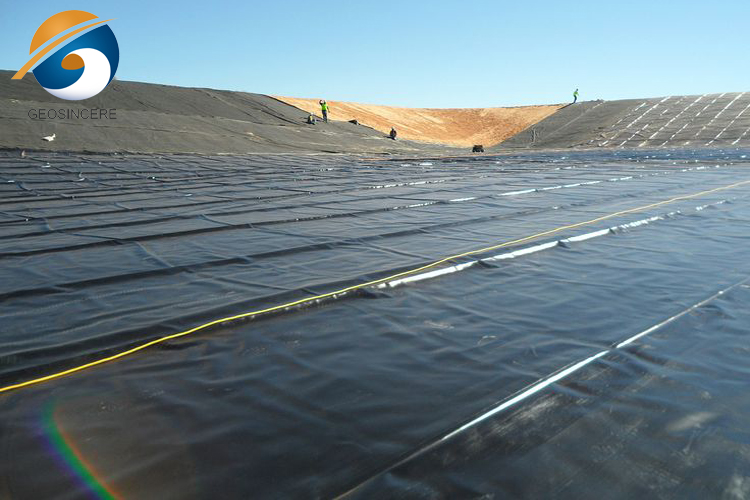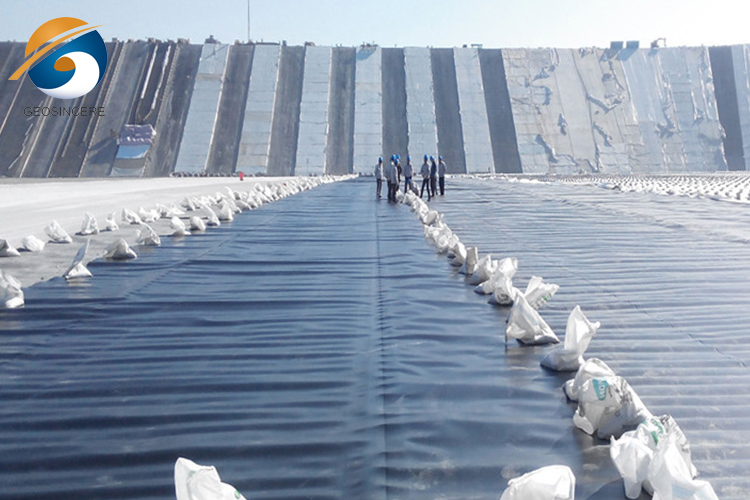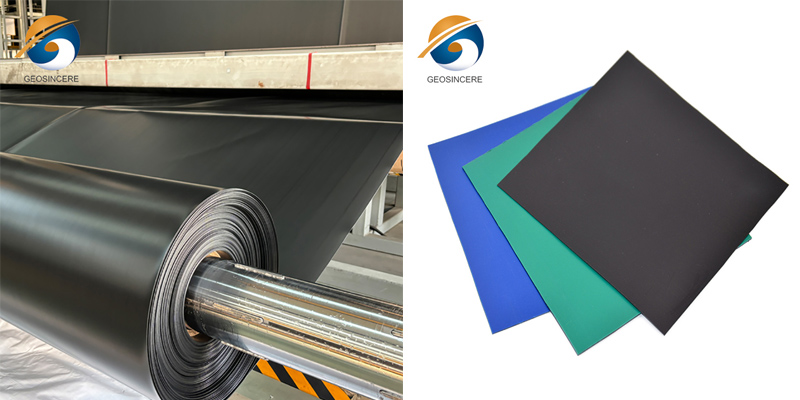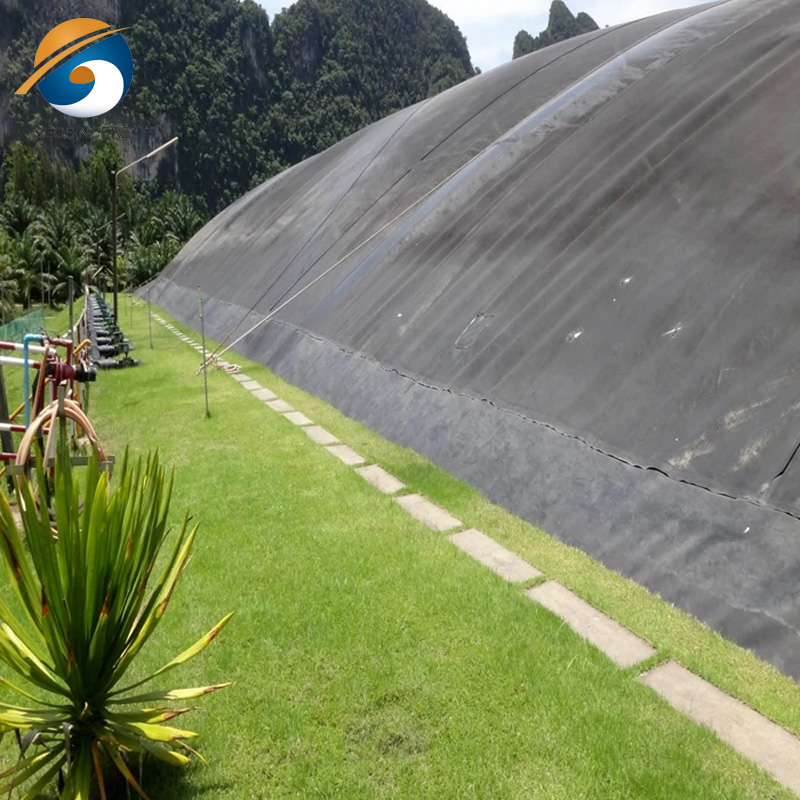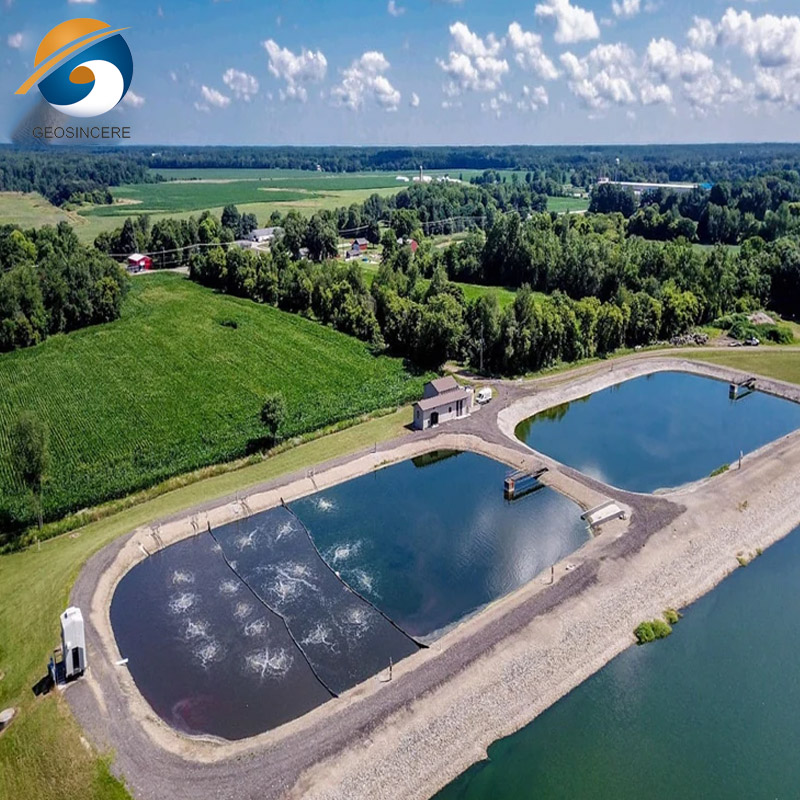What Are The Key Factors That Influence The Pricing of Geomembrane Liner?
When it comes to the pricing of geomembrane liners, there are several key factors that come into play, each having a significant impact on the final cost. Understanding these factors is crucial for anyone looking to invest in this versatile and essential material.
The pricing of geomembrane liner, a critical component in various infrastructure and environmental projects, is influenced by a confluence of factors. At the forefront is the raw material cost, which can fluctuate based on global supply and demand dynamics for the polymers, resins, and additives that comprise these durable sheets.Importantly, the specific application and performance requirements of the geomembrane liner, such as its thickness, chemical resistance, and expected lifespan, can significantly affect its pricing.
Through this article, you will have a deeper understanding of the factors related to geomembrane pricing. By understanding these key factors, you can ensure the best balance of quality, performance and cost-effectiveness from raw material costs to logistics challenges and market competition.
1. What Is A Geomembrane Liner?
A geomembrane liner is a type of synthetic membrane or sheet-like material used for various environmental and engineering applications. These liners are typically made from high-performance polymeric materials, such as polyethylene, polypropylene, or polyvinyl chloride, and are designed to provide a durable, impermeable barrier to prevent the migration of liquids or gases.
Geomembrane liners are commonly used in waste containment facilities, landfills, and ponds to prevent the leakage of hazardous or contaminated materials into the surrounding soil and groundwater. They are also used in the construction of artificial reservoirs, canals, and other water-retaining structures to minimize water loss and maintain the integrity of the system. Additionally, geomembrane liners are employed in environmental remediation projects, such as the capping of contaminated sites, to isolate and contain the contaminants.
The key properties that make geomembrane liners effective include their low permeability, chemical resistance, and durability. They are designed to withstand various environmental stresses, such as exposure to UV radiation, extreme temperatures, and mechanical loads, while maintaining their structural integrity and performance over an extended lifespan.
2. What Determines The Price of A Geomembrane Liner?
Material Type: The raw material used to manufacture the geomembrane is a major cost driver. Liners made from more expensive polymers like HDPE or reinforced PVC will generally cost more than those made from more basic materials like unreinforced PVC or polyethylene.
Thickness: Thicker geomembranes, which provide greater durability and puncture resistance, are more expensive than thinner variants. Typical thicknesses range from 0.5 mm to 2.5 mm, with the higher end of that range costing significantly more.
Surface Texture: Some geomembranes have textured or studded surfaces to improve friction and traction during installation. These specialized surfaces add to the manufacturing cost compared to smooth-surfaced liners.
Transportation Costs: The distance the geomembrane has to be shipped from the manufacturing site to the project location can impact the final price, especially for bulky, heavy rolls of material.
Project-Specific Factors: Things like project size, installation complexity, and required quality assurance testing can all influence the overall pricing for a geomembrane liner system.
In summary, factors such as material type, thickness, surface texture, and transportation/installation will all affect the final cost of your geomembrane liner.
3.How To Choose The Thickness of Geomembrane for Different Applications?
3.1 Containment Requirements:
- For applications like landfill liners, wastewater ponds, or hazardous waste containment, the required level of impermeability and containment is a primary driver.
- Thicker geomembranes (e.g., 1.5 mm or 60 mil) are often specified for these applications to provide a robust barrier and ensure long-term performance.
3.2 Mechanical Loads and Stresses:
- The expected mechanical loads, stresses, and potential puncture or tear hazards should be evaluated.
- For applications with high static or dynamic loads, such as beneath roadways or under heavy equipment, a thicker geomembrane (e.g., 2.0 mm or 80 mil) may be necessary to provide the required strength and durability.
3.3 Environmental Exposure:
- The level of exposure to UV radiation, chemicals, or other weathering factors should be considered.
- Thicker geomembranes (e.g., 1.5 mm or 60 mil) are generally recommended for applications with prolonged exposure to environmental stresses to ensure long-term integrity.
3.4 Installation and Handling:
- The ease of installation and the availability of equipment and labor to handle the geomembrane should be taken into account.
- Thicker geomembranes (e.g., 1.0 mm or 40 mil) may be more challenging to deploy in complex or confined spaces, while thinner membranes (e.g., 0.75 mm or 30 mil) may be easier to install.
3.5 Cost and Availability:
- The project budget and the overall cost-effectiveness of the geomembrane should be considered.
- Thicker geomembranes generally have a higher cost per unit area, so the balance between performance requirements and cost should be evaluated.
- The availability and lead times of different geomembrane thicknesses in the local market should also be factored in.
3.6 Regulatory and Design Requirements:
- In some applications, such as landfill liners or water containment structures, there may be specific regulatory or design requirements for the minimum geomembrane thickness.
By considering these factors, you can determine the optimal geomembrane thickness that meets the specific requirements of the application, balancing performance, cost, and installation feasibility.
4. How To Balance Performance and Cost When Choosing Geomembranes?
The following cases illustrate that in different application scenarios, it is necessary to weigh the performance indicators and cost factors of geomembranes to make the best choice.
4.1 Landfill anti-seepage project
- Scenario: It is necessary to use anti-seepage geomembranes on the base and cover of the landfill to block leachate and groundwater pollution.
- Performance requirements: high impermeability, chemical corrosion resistance, and aging resistance.
- Cost budget: high, because this is a key link in the project.
- Selection plan: Use HDPE geomembranes with a thickness of 0.5-2.0mm to meet high anti-seepage performance requirements. Appropriately increase the thickness of the membrane to ensure long-term use. Although the cost is slightly higher, the overall cost performance is good.
4.2 Agricultural greenhouse weed control project
- Scenario: Lay geomembranes under the foundation of agricultural greenhouses to block weed growth.
- Performance requirements: high tensile strength and puncture resistance.
- Cost budget: relatively low, with limited agricultural investment.
- Option: Use 0.3-0.5mm thick LDPE geomembrane, which meets the performance requirements and is low in cost. Choosing a film can control costs.
4.3 Highway roadbed foundation reinforcement project
- Scenario: Lay geomembrane on soft foundation to enhance the bearing capacity of the roadbed.
- Performance requirements: high tensile strength and high impact resistance.
- Cost budget: medium to high, part of the main project.
- Option: Use 0.8-1.2mm thick HDPE geomembrane to meet the strength requirements. Appropriately increase the film thickness to ensure long-term use.
5. In Addition to Cost Factors, What Other Performance Indicators Should Be Considered When Selecting Geomembranes?
5.1 Tensile strength and tear resistance:
- Geomembranes need to withstand certain tensile and tear forces, and these indicators directly affect the service life and reliability of the membrane. Especially in places where slopes and side slopes are susceptible to external forces.
5.2 Puncture resistance:
- Geomembranes may be punctured by sharp objects when laid, so puncture resistance is very important. This is related to the integrity and impermeability of the membrane.
5.3 Permeability:
- If it is used for anti-seepage, isolation and other occasions, the low permeability of the membrane material is a key indicator.
5.4 Chemical resistance and aging resistance:
- Membranes need to maintain stable performance in complex chemical environments and long-term exposure to sunlight, weathering and other effects.
5.5 Seam performance:
- Geomembranes often need to be seamed on site, and the strength and sealing performance of the seams directly affect the overall impermeability.
5.6 High and low temperature resistance:
- According to the ambient temperature conditions of construction and use, the membrane material needs to have good temperature resistance.
5.7 Anti-biological corrosion performance:
- In some cases, the geomembrane may be corroded by bacteria, fungi and other organisms, and needs to have corresponding corrosion resistance.
6.Summary
The longer-lasting geomembrane may have a higher upfront cost, but the lifecycle cost savings can make it the more economical choice in the long run. Factors like reduced replacement and maintenance requirements, improved environmental sustainability, enhanced operational reliability, and less disruption to the project or facility all contribute to the superior value proposition of the longer-lasting, higher-quality geomembrane. We are standing by to provide you with the guidance and support you need to select the optimal geomembrane liner for your application. We look forward to the opportunity to collaborate with you and deliver a solution that meets your unique requirements. Please don't hesitate to reach out if you have any questions or would like to discuss your project further.

